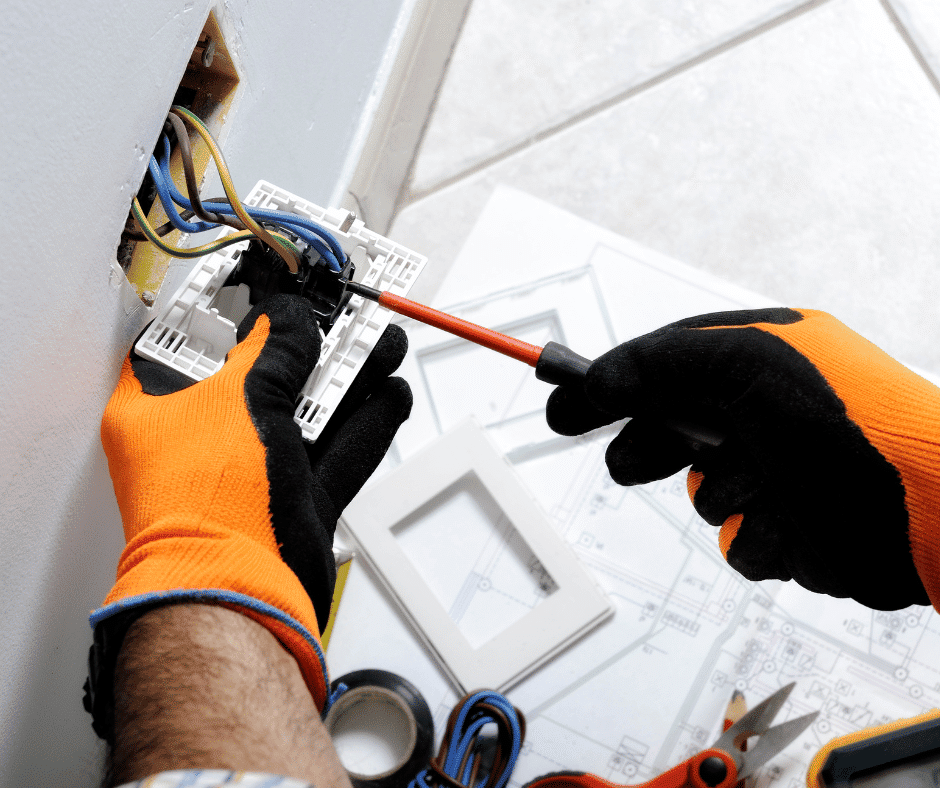Disclaimer: This article provides an overview of recent changes to the Florida Building Code, 8th Edition, in 2023. It is not legal advice, and professionals should thoroughly review code changes independently for specific applications.
Florida’s building codes form the backbone of structural safety and resilience in the state. To keep structures as safe as possible while keeping pace with evolving construction practices and safety standards, building code regulations must be regularly updated.
The 8th Edition of the Florida Building Code, effective December 31, 2023, introduces significant changes across multiple domains, including plumbing, mechanical, and electrical codes.
Updates to Florida Building Codes: 8th Edition, 2023
The 8th Edition brings several key changes that directly impact the plumbing, mechanical, and electrical codes. These changes aim to enhance the integrity, sustainability, and safety of structures. In this article, we share our take on each of these modifications to help you stay compliant within the latest standards.
- Plumbing Code Changes
- Energy Conservation Code Changes
- Mechanical Code Changes
- Electrical Code Changes
For more details, download the PDF here.
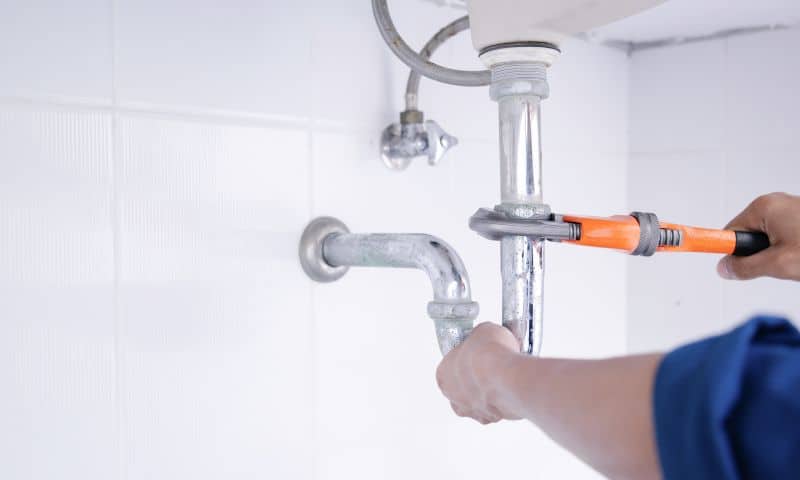
Florida Building Code: Plumbing Code Changes
Plumbing codes, vital for structural integrity, undergo noteworthy adjustments in the 8th Edition. These changes focus on improving the functionality and safety of plumbing systems, addressing emerging industry standards.
List of Plumbing Code Changes
- Code Title: 314.2.1.1 CONDENSATE DISCHARGE
- What Changed and Why: Condensate drains are now prohibited from directly connecting to any plumbing drain, waste, or vent pipe. They should discharge into specific waste receptacles, excluding hub drains on the lowest floor. This change addresses safety concerns and aligns with industry best practices.
- Code Title: 403.1.1 FIXTURE CALCULATIONS (MINIMUM PLUMBING FACILITIES)
- What Changed and Why: This section has been updated with new exceptions related to fixture calculations based on statistical data, multi-user facilities, and distribution of the sexes. The changes aim to provide flexibility in fixture count requirements based on occupant load and gender distribution.
- Code Title: 403.2 (MINIMUM PLUMBING FACILITIES)
- What Changed and Why: Exceptions have been added to this section, stating that separate facilities are not required for dwelling units and in various structures with specific occupant loads. Notable exceptions include instances where single-user toilets are provided and when rooms have both water closets and lavatory fixtures for use by both sexes.
- Code Title: 4101.4 SUBSTITUTION (DRINKING FOUNTAINS)
- What Changed and Why: The conditions under which water dispensers can substitute for drinking fountains have been refined. Drinking fountains are not required in restaurants offering free water in containers, and water dispensers can now substitute for up to 50 percent of the required number of drinking fountains in certain occupancies.
- Code Title: 606.1 LOCATION OF FULL-OPEN VALVES
- What Changed and Why: The update mandates the installation of full-open valves on the water distribution supply pipe at the entrance into the structure. In multiple-tenant buildings, each tenant space must now have a main shutoff valve. This requirement enhances water distribution control in shared spaces.
- Code Title: 608.15.2.1 RELIEF PORT PIPING (PROTECTION OF POTABLE WATER SYSTEM)
- What Changed and Why: The section now specifies that the termination of piping from the relief port of a backflow preventer must discharge to an approved waste receptor or outdoors. Additionally, the waste receptor and drainage piping must be sized to accommodate the maximum discharge flow rate, offering clearer guidelines for backflow preventer installations.
- Code Title: 708.1.12 CLEANOUT EQUIVALENT (CLEANOUTS)
- What Changed and Why: This new sub-section allows a fixture trap or a fixture with an integral trap, removable without altering concealed piping, to serve as a cleanout equivalent. This addition provides flexibility in meeting cleanout requirements and may reduce the number of cleanouts needed on sanitary piping.
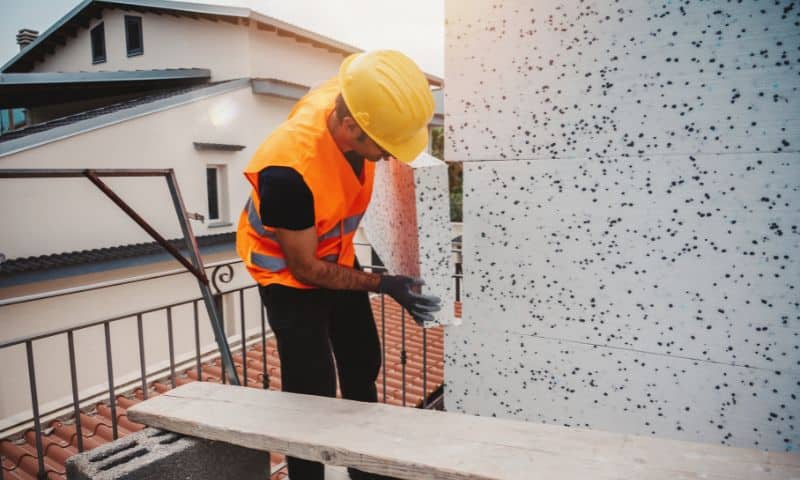
Florida Building Code: Energy Conservation Code Changes
Energy conservation is prioritized in the Energy Conservation Code revisions. The changes in the 8th Edition align with contemporary practices, promoting sustainability and efficiency in building construction.
List of Energy Conservation Code Changes
- Code Title: C402.5.11 OPERABLE OPENINGS INTERLOCKING (MANDATORY)
- What Changed and Why: This new section mandates that operable openings larger than 40 square feet be interlocked with heating and cooling systems. When open, the cooling setpoint must rise to 90 degrees, and the heating setpoint must drop to 55 degrees within 10 minutes. Exceptions exist for specific areas, such as separately zoned food preparation spaces and warehouses utilizing overhead doors for occupancy functions.
- Code Title: C402.5.11.1 OPERABLE CONTROLS (MANDATORY)
- What Changed and Why: Added to complement the previous section, this mandates that controls comply with Section C403.6, ensuring that occupants cannot condition a space while a large operable opening is open.
- Code Title: C403.6 OPERABLE OPENING INTERLOCKING CONTROLS (MANDATORY)
- What Changed and Why: This section requires heating and cooling systems to interlock with set temperatures of 90 degrees for cooling and 55 degrees for heating when operable openings larger than 40 square feet are open. The systems must shut off entirely when outdoor temperatures fall below 90 degrees or rise above 55 degrees.
- Code Title: C403.2.3 HVAC EQUIPMENT PERFORMANCE REQUIREMENTS
- What Changed and Why: The tables in this section were updated to enforce the new Minimum Efficiency Requirements for HVAC mandated by the Department of Energy, effective January 1st, 2023. The equipment must meet specified efficiency standards, verified through certification under an approved program or supported by manufacturer-furnished data.
- Code Title: R402.4.1.2 TESTING
- What Changed and Why: This section introduces testing and verification requirements for air leakage rates in dwelling units. Testing is mandatory, with exceptions for certain alterations and renovations. Whole-house mechanical ventilation is now required for dwelling units with air leakage rates of less than three air changes per hour. Additionally, specific testing conditions are outlined, such as closed but unsealed windows and doors and turned-off heating and cooling systems during the test.
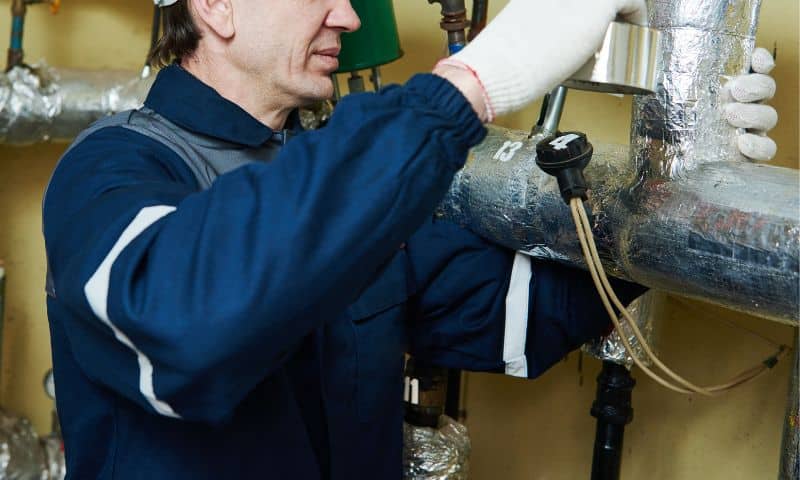
Florida Building Code: Mechanical Code Changes
The Mechanical Code undergoes key changes to ensure the proper functioning of mechanical systems within buildings. These modifications contribute to the reliability and longevity of mechanical components of structures.
List of Mechanical Code Changes
- Code Title: 307.1.1 IDENTIFICATION
- What Changed and Why: This section now requires the marking of concealed condensate piping terminations to indicate whether they are connected to the primary or secondary drain.
- Code Title: 307.2.3.3 IDENTIFICATION
- What Changed and Why: Similar to the previous code, this section adds the requirement to mark the termination of concealed condensate piping.
- Code Title: 307.2.1.1 (IPC [M] 314.2.1.1) CONDENSATE DISCHARGE
- What Changed and Why: Added to align the Mechanical code with the Plumbing code, specifying that condensate drains should not directly connect to plumbing drains, waste, or vent pipes. It also defines approved discharge points.
- Code Title: 401.4 INTAKE OPENING LOCATION
- What Changed and Why: This new section provides exceptions to the minimum distances required for environmental exhaust and is designed to accommodate combination factory-built terminations.
- Code Title: 501.3.1 LOCATION OF EXHAUST OUTLETS
- What Changed and Why: Similar to the intake opening location, this section includes exceptions to the minimum distances for environmental exhaust and is tailored for combination factory-built terminations.
- Code Title: TABLE 403.3.1.1 MINIMUM VENTILATION RATES
- What Changed and Why: This table update increases the minimum continuous exhaust CFM for dwelling unit bathrooms and kitchens to 25 and 50 CFM, respectively.
- Code Title: 407.1 GENERAL
- What Changed and Why: This section was updated to include NFPA 99 in the requirements for mechanical ventilation in ambulatory care facilities and Group I-2 occupancies.
- Code Title: 502.20.1 OPERATION
- What Changed and Why: Added to clarify when source capture exhaust systems for manicure and pedicure stations are required to operate continuously.
- Code Title: 504.4.1 TERMINATION LOCATION
- What Changed and Why: This section clarifies how and where dryer exhaust ducts should terminate, especially in the absence of manufacturer’s instructions.
- Code Title: 504.6 BOOSTER FANS PROHIBITED
- What Changed and Why: This new section explicitly prohibits the use of domestic booster fans in dryer exhaust systems.
- Code Title: 507.2 TYPE I HOODS
- What Changed and Why: The section was updated to clarify exceptions and provide new criteria for certain cooking appliances, solid fuel or combination gas and solid fuel pizza ovens.
- Code Title: 510.6.5 MAKEUP AIR
- What Changed and Why: This section was updated to emphasize the need for makeup air equal to the exhaust air being removed from spaces containing vapors, gases, and smoke.
- Code Title: 602.2.1.8 PIPE AND DUCT INSULATION WITHIN PLENUMS
- What Changed and Why: This section now clarifies that if insulation is used to reduce flame spread and smoke-developed indices, the complete assembly needs to be tested together.
- Code Title: 604.3 COVERINGS AND LININGS
- What Changed and Why: Added details on flame spread and smoke-developed indices for duct coverings and linings, with a specific exception for polyurethane foam insulation used on the exterior of ducts.
- Code Title: 920.4 PROHIBITED USES
- What Changed and Why: This section was added to specify the prohibited locations for suspended-type unit heaters in Group I-2 and ambulatory care facilities.
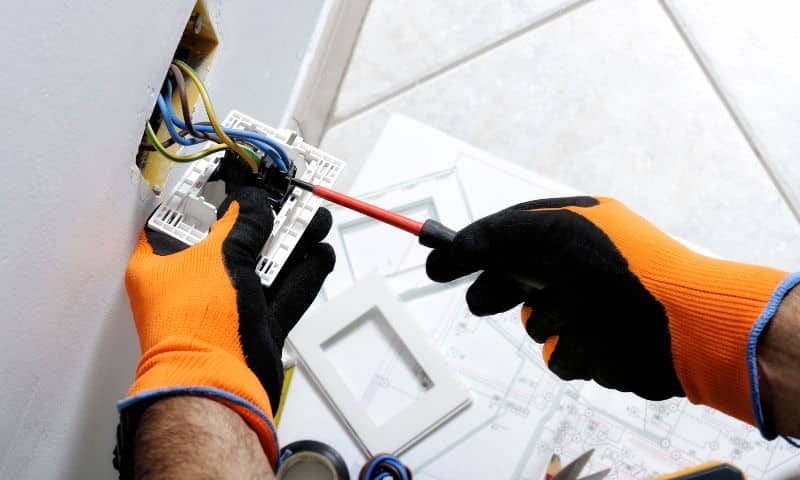
Florida Building Code: Electrical Code Changes
Safety is paramount in electrical systems. The Electrical Code updates in the 8th Edition focus on enhancing occupant safety by addressing critical aspects of electrical installations and responding to emerging safety considerations and technologies.
List of Electrical Code Changes
Building Code Changes:
- Code Title: 1008.2.1 ILLUMINATION LEVEL UNDER NORMAL POWER
- What Changed and Why: The means of egress illumination level must now be not less than 1 foot-candle (11 lux) at the walking surface, and, along exit access stairways, exit stairways, and at their required landings, the illumination level must not be less than 10 foot-candles at the walking surface when the stairway is in use.
- Code Title: 1008.3.1 GENERAL
- What Changed and Why: The section now requires an emergency electrical system to automatically illuminate specific areas, including aisles, corridors, exit access stairways, and ramps, in the event of a power supply failure. Terminology has been updated from “means of egress” to “exits or access to exits.”
- Code Title: 1008.3.2 BUILDINGS
- What Changed and Why: Similar to the change in 1008.3.1, this section has been updated to replace “means of egress” with “exits or access to exits,” specifying areas within buildings that require emergency illumination during a power failure.
- Code Title: [F] 2702.2.4 EMERGENCY VOICE ALARM COMMUNICATION SYSTEMS
- What Changed and Why: The requirement for emergency power has been updated to standby power for voice/alarm communication systems.
- Code Title: 3006.3 HOISTWAY OPENING PROTECTION
- What Changed and Why: The section now explicitly mentions the requirement for smoke protective curtain assemblies at each elevator hoistway door opening to prevent smoke spread during fires.
- Code Title: 3007.1 GENERAL
- What Changed and Why: A new exception has been added, stating that fire service access elevators are not required to serve the top floor if that floor is used only for building system equipment.
Energy Conservation Code Changes:
- Code Title: C103.1 GENERAL
- What Changed and Why: The section has been revised to allow the submission of digital format construction documents, where permitted by the local authority having jurisdiction.
- Code Title: C103.2 INFORMATION ON CONSTRUCTION DOCUMENTS
- What Changed and Why: The list of requested construction document details has been updated to prioritize the required Energy Compliance Path data, if applicable.
- Code Title: C104.2.6 FINAL INSPECTION
- What Changed and Why: Final inspection requirements now include verification of the installation and proper operation of all required building controls, with the addition of documentation verifying activities associated with required building commissioning.
- Code Title: C405.1.1 WALK-IN COOLER LIGHTING
- What Changed and Why: This is a new section specifying lighting requirements for walk-in coolers, walk-in freezers, refrigerated warehouse coolers, and refrigerated warehouse freezers.
- Code Title: C405.2.1 OCCUPANT SENSOR CONTROL FUNCTION
- What Changed and Why: The revised section includes corridors and other spaces 300 sq. ft. (28m2) or less enclosed by floor-to-ceiling partitions as areas requiring occupant sensor controls. An exception allows fully automatic-on controls in specific building areas where manual control could jeopardize safety or security.
- Code Title: C405.2.1.4 OCCUPANT SENSOR CONTROL FUNCTION IN CORRIDORS
- What Changed and Why: New section requiring occupant sensor controls in corridors to uniformly reduce lighting power to 50 percent within 20 minutes after all occupants have left, with exceptions for corridors with very low lighting levels.
- Code Title: C405.2.2 TIME-SWITCH CONTROLS
- What Changed and Why: The section and exception have been updated, eliminating the time switch control requirement for luminaires with specific application controls.
- Code Title: C405.2.3 LIGHT-REDUCTION CONTROLS
- What Changed and Why: New section requiring manual light reduction controls in spaces without occupant sensor controls, with exceptions for specific situations.
- Code Title: C405.2.7.3 LIGHTING SETBACK
- What Changed and Why: New provision for controlling lighting in specific times and reducing power based on activity, especially for outdoor parking areas.
- Code Title: C405.2.8 PARKING GARAGE LIGHTING CONTROL
- What Changed and Why: New section specifying controls for parking garage lighting, including automatic reduction of power based on activity and daylight response.
- Code Title: C405.3.2.1 TABLE C405.3.2 (1)
- What Changed and Why: Reduced building area method LPD allowances in Table C405.3.2 (1).
- Code Title: C405.3.2.1 TABLE C405.3.2 (2)
- What Changed and Why: Reduced space-by-space method LPD allowances in Table C405.3.2 (2).
- Code Title: C408.3.1 FUNCTIONAL TESTING
- What Changed and Why: Modified language requiring evidence of functional testing for lighting control systems before passing the final inspection.
- Code Title: C408.3.2 DOCUMENTATION REQUIREMENTS
- What Changed and Why: The final documents must explicitly state that drawings, manuals, and reports be provided to both the building owner and the code official within 90 days of receiving the certificate of occupancy.
- Code Title: R404.1 LIGHTING EQUIPMENT (MANDATORY)
- What Changed and Why: Increases percentage of permanently installed luminaires and lamps required to have specified higher efficacies from 90% to “all,” with an exception for those in kitchen appliances.

Florida Building Code FAQs
This section addresses common questions about Florida building codes, providing clarity on the code versions, exemptions, and where to access local building codes.
Which building code does Florida use?
Florida primarily uses the 8th edition of the Florida Building Code, effective December 31, 2023 to meet evolving standards and needs.
What structures are exempt from Florida Building Code?
Certain structures, such as railroads and other buildings and structures specifically regulated by the federal government, may be exempt from specific code requirements.
What is the latest version of Florida Building Code?
The latest version of the Florida Building Code is the 8th Edition, effective December 31, 2023. For more details, download the PDF here (insert link to PDF, or email link form for email collection strategy), or visit this website.
When did Florida update building codes?
Florida updated its building codes with the release of the 8th Edition, effective December 31, 2023. We share our take on each of these modifications to help you stay compliant within the latest standards.
Where do I find local building codes?
Local Florida building codes can be found here. Ensure you check with local authorities for the most accurate information.
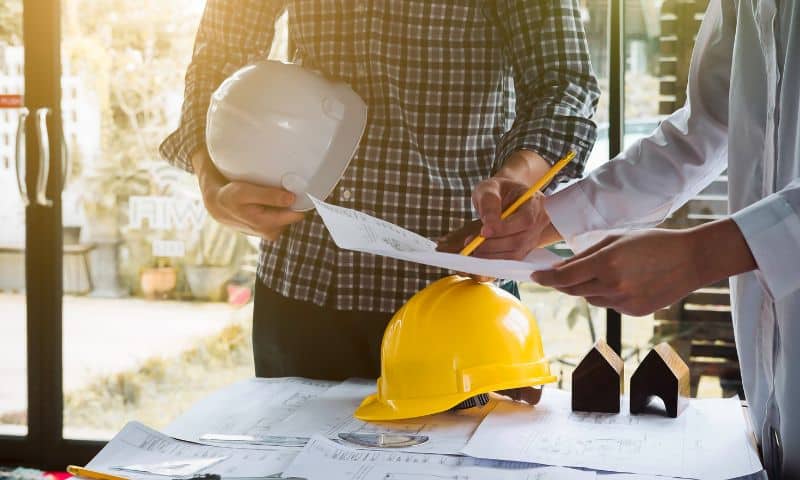
Wrapping Things Up
Staying informed about Florida building code changes is crucial for professionals in the industry. The 8th Edition, effective December 31, 2023, brings notable updates across plumbing, energy conservation, mechanical, and electrical codes. For a detailed understanding, review the official documents independently.
For more details, download the PDF here.
Contact VP Engineering to learn more about how these changes could affect your next project.
Sources:
- https://codes.iccsafe.org/codes/florida
- https://up.codes/viewer/florida/fl-building-code-2023
- https://www.icc-nta.org/code-update/8th-edition-2023-update-to-the-florida-building-code-fbc/
- https://www.floridabuilding.org/fbc/thecode/2023_Code_Development/2023_Code_Development_Process.htm
- https://www.floridahousing.org/docs/default-source/aboutflorida/august2017/august2017/tab4.pdf
- https://www.floridabuilding.org/fbc/Publications/2023_Effective_Dates.pdf
- https://codes.iccsafe.org/content/FLBC2023P1/chapter-1-scope-and-administration

